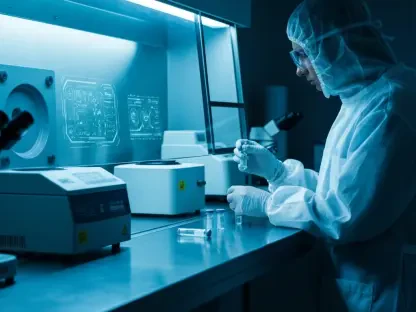In a groundbreaking development for rheumatoid arthritis treatment, Lifordi Immunotherapeutics, a clinical-stage biotech firm headquartered in Burlington, Massachusetts, has successfully raised $112 million in a funding round led by Sanofi Ventures, with continued support from prominent investors such as ARCH Ventures, 5AM Ventures, and Atlas Venture. This substantial financial boost highlights the industry’s confidence in Lifordi’s innovative approach to tackling one of the most persistent challenges in autoimmune disease management: the toxicity of systemic steroid therapy. At the forefront of this effort is LFD-200, a VISTA-targeted antibody-drug conjugate (ADC) designed to deliver glucocorticoids directly to immune cells, potentially revolutionizing how inflammation is controlled in RA patients. With the company poised to release its first human data from a Phase 1 trial, this funding marks a critical juncture in the journey toward safer, more effective therapies for millions affected by this debilitating condition.
Revolutionizing Steroid Treatment for RA
The use of steroids in managing rheumatoid arthritis has long been a double-edged sword, offering rapid relief from inflammation but at the cost of severe side effects like bone loss, metabolic disorders, and hormonal imbalances. For decades, these drawbacks have constrained long-term use, often leaving patients in a precarious balance between relief and risk. Lifordi’s LFD-200 seeks to disrupt this paradigm by focusing on targeted delivery, ensuring that glucocorticoids reach only the immune cells driving inflammation in RA joints. By minimizing exposure to other tissues, this approach could significantly reduce the systemic toxicity that has plagued traditional steroid treatments. If successful, this therapy might offer a lifeline to those who depend on steroids as a stopgap while awaiting the effects of slower-acting medications, potentially reshaping clinical strategies for managing acute flares.
Another dimension of this innovation lies in addressing the unmet needs of RA patients who face limited options during critical treatment phases. Current guidelines advocate for minimal steroid use due to safety concerns, yet many individuals still rely on these drugs for immediate symptom control. LFD-200’s promise of combining the quick action of steroids with a safer profile could fill this gap, providing a much-needed alternative during the early stages of therapy escalation. The $112 million investment reflects a strong belief in Lifordi’s potential to deliver on this vision, with investors betting on a future where precision medicine mitigates the harsh trade-offs of conventional treatments. As the company moves toward revealing key trial data, the focus remains on whether this targeted approach can live up to its transformative potential in real-world applications.
VISTA as a Game-Changing Delivery Mechanism
Central to LFD-200’s design is the strategic use of the VISTA protein, highly expressed on inflammatory cells like synovial macrophages and neutrophils within RA joints. Unlike therapies that target VISTA for its immune-modulating properties, Lifordi employs it as a precise entry point to deliver glucocorticoids directly into the cells fueling joint damage. Preclinical findings showcased at recent industry events indicate that LFD-200 rapidly internalizes upon binding to VISTA, sharply limiting off-target effects in sensitive areas such as bone, liver, and endocrine systems. This specificity marks a significant departure from systemic steroid distribution, potentially curbing the collateral damage associated with traditional therapies while maintaining their anti-inflammatory punch.
However, leveraging VISTA comes with inherent complexities that Lifordi must carefully manage. As a negative immune checkpoint, VISTA plays a role in regulating immune responses, and any unintended disruption through this delivery mechanism could trigger unforeseen immunological consequences. The challenge lies in ensuring that the antibody’s interaction with VISTA remains strictly functional for drug delivery without altering its natural signaling pathways. As Lifordi advances through clinical testing, these mechanistic risks will be under intense scrutiny, with early human data expected to shed light on whether the benefits of targeted delivery outweigh potential immune-related drawbacks. The stakes are high, as overcoming these hurdles could position LFD-200 as a pioneering solution in autoimmune therapy.
Lessons from Previous Targeted Steroid Efforts
The pursuit of targeted glucocorticoid delivery is not uncharted territory, and Lifordi’s journey is informed by the successes and setbacks of earlier programs. Initiatives like AbbVie’s ABBV-3373, an anti-TNF ADC with a steroid payload, and Nanocort, a pegylated liposomal prednisolone, demonstrated the feasibility of reducing systemic exposure while maintaining efficacy against RA symptoms. However, both faced significant obstacles, including hypersensitivity reactions and immunogenicity issues such as complement activation-related pseudoallergy (CARPA), which ultimately hindered their progress. These experiences serve as both validation of the concept and a stark reminder of the safety challenges that must be addressed for such therapies to reach the market.
For LFD-200, the lessons from these predecessors are critical, particularly as it introduces a subcutaneous, VISTA-based delivery system that aims to minimize similar adverse effects. The differentiation lies in its cellular specificity and administration method, which could potentially lower the risk of immune overreactions that plagued earlier attempts. Yet, the path remains fraught with uncertainty, as even minor safety concerns could derail clinical advancement. The upcoming Phase 1 trial results will be a defining moment, offering the first glimpse into whether Lifordi can navigate the pitfalls that stymied others. Success here would not only validate LFD-200’s approach but also reinforce the broader potential of targeted steroid delivery as a viable strategy for autoimmune conditions.
Investor Backing and the RA Treatment Landscape
The $112 million funding round, spearheaded by Sanofi Ventures, underscores profound optimism in Lifordi’s capacity to address a persistent clinical void in rheumatoid arthritis care. Despite advances in disease-modifying antirheumatic drugs (DMARDs), many patients still turn to steroids for rapid inflammation control during treatment transitions, often at great personal cost due to toxicity. LFD-200’s ambition to replicate the swift efficacy of oral prednisone with a safer profile aligns directly with this urgent need, positioning it as a potential bridge therapy that could alter clinical protocols. Investor confidence suggests a shared recognition of the transformative impact such an innovation could have on patient outcomes.
Beyond the immediate implications for RA, this investment reflects broader faith in Lifordi’s strategic direction within the competitive landscape of autoimmune therapies. The focus on precision delivery through ADCs taps into a growing trend toward personalized medicine, where specificity is paramount to reducing treatment-related harm. As the company prepares to transition from preclinical promise to clinical reality, the financial backing provides the resources needed to tackle rigorous testing and regulatory hurdles. The critical next step lies in the Phase 1 data, which will offer early insights into LFD-200’s safety and effectiveness, potentially paving the way for a redefined standard of care in managing RA’s acute phases.
Future Horizons in Precision Autoimmune Care
Lifordi’s efforts with LFD-200 are emblematic of a larger shift toward precision medicine in treating autoimmune diseases, where technologies like antibody-drug conjugates are redefining therapeutic possibilities. The consensus among industry stakeholders is clear: while systemic steroids remain effective, their risks necessitate innovative alternatives that prioritize cellular targeting over broad exposure. LFD-200’s alignment with this trend, through its focus on VISTA-mediated delivery, positions it at the forefront of a movement seeking to balance potency with patient safety. However, the specter of immunogenicity and hypersensitivity looms large, as past programs have shown how quickly such issues can undermine even the most promising therapies.
Looking ahead, the trajectory of LFD-200 will hinge on its ability to demonstrate a distinct safety profile in human trials, a milestone that could influence the broader field of targeted steroid delivery. The upcoming release of Phase 1 results marks the beginning of a critical evaluation period, with subsequent studies in RA patients set to further test the therapy’s real-world applicability. Success in these stages could catalyze wider adoption of precision approaches, encouraging further investment and research into ADCs for other autoimmune conditions. As Lifordi navigates these challenges in the coming months, the focus shifts to actionable outcomes—refining trial designs, prioritizing safety data, and laying the groundwork for scalable solutions that could ultimately benefit countless patients worldwide.









